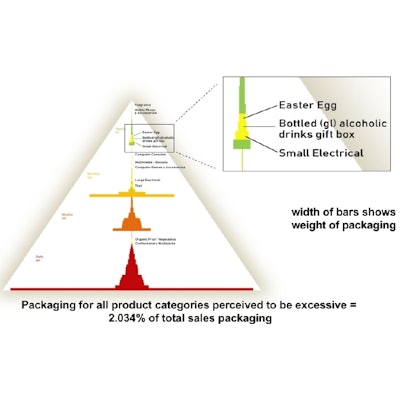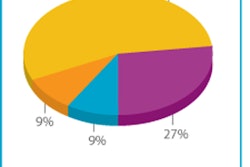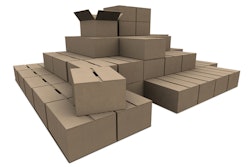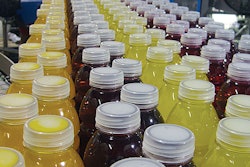
Valpak (www.valpak.co.uk), the UK’s leading provider of producer responsibility and recycling solutions, in association with the Industry Council for Packaging and the Environment (INCPEN, www.incpen.org), have produced a series of packaging pyramids to show the total amounts of packaging used per year on 73 different types of products purchased on a daily, weekly, monthly, and annual basis.
These pyramids were produced as a result of increasing consumer concerns about excessive packaging. In particular, Easter egg packaging is often at the forefront of the excess packaging debate--especially at this time of year.
It is estimated that more than100 million Easter eggs are sold in the U.K. each year, protected by approximately 8,000 tonnes (8,800 tons) of packaging. However, the packaging pyramids uncover how some products perceived as being big contributors to the U.K. waste stream, such as Easter eggs, make small contributions due to their seasonal nature.
In fact, Easter egg packaging in recent years accounts for less than 0.3% of the total packaging used for all of the 73 types of products.
This type of packaging is important, though, because some consumers are concerned about it. However, there's a need to recognize the excellent work carried out to reduce packaging for all the other products purchased more frequently. Minimizing the packaging on cans, bottles, tubs, and wrapping often goes unnoticed, but it keeps the weekly waste down, whereas we enjoy Easter eggs just annually.
Furthermore, all the major manufacturers have listened to consumer concerns, and many eggs this year have less packaging (see Greener in Europe: Cadbury's 'eco-eggs', published February 26th, 2009).
Steve Gough, Valpak CEO, comments, “Unnecessary packaging continues to be a hot topic of debate. As a result, Valpak and INCPEN have produced a series of packaging pyramids to try and put this topic into perspective. ”
Jane Bickerstaffe, INCPEN director says, “Packaging costs money, so it makes commercial and environmental sense for companies to reduce packaging, though not so far that the product gets damaged.”
Although most excess packaging is usually associated with seasonal products or gift items, there are some other products where there is scope for reduction. The packaging pyramids also help identify these.
You can download a PDF of the detailed pyramid at www.valpak.co.uk/images/news/final_pyramid.pdf
For more about INCPEN, see Green packaging in Europe: the view from the U.K.
Further information can be found at the www.recycle-more.co.uk Web site.
For more information on the packaging pyramid, call (011) 8450 682 572 or email [email protected].
















![Xl Touch Scoreboard Screen High Res[39]](https://img.packworld.com/mindful/pmmi/workspaces/default/uploads/2025/12/xl-touch-scoreboard-screen-highres39.JHTycZQYnN.png?auto=format%2Ccompress&fit=crop&h=227&q=70&w=340)







